Advising people about pots and containers for their homes and businesses has been part of my job for going on 17 years. Those same 17 years have put me in contact with a vast selection of antique, vintage, modern and contemporary containers from many different periods and countries. Does this make me an expert? I would hesitate to go that far, but I will say I have had considerable exposure. Exposure to and knowledge of garden containers helps me advise the right pot for the right place. One aspect of container design that interests me the most is how that pot meets the hard surface on which it sits. These French glazed pots have a stepped base, or foot, that supports the body of the pot. These big bodied pots would look clunky indeed without their bases.
The shape of the bottom of a container, and how that bottom meets the oorch surface or terrace, greatly influences what I recommend. I am sure you have seen an Olympic gymnast perform a complicated routine, and unerringly land on their feet. Squarely on two feet. That flawless two footed landing is enormously important. A urn, pot or planter that has a foot keeps a large container from looking heavy. A hefty container from bottoming out. These English arts and crafts period limestone pots are both massive and hefty. The claw feet make them feel lighter, and more graceful.
The squashed ball feet under these orangery boxes do more than just lighten the look. Pots need to drain; growing plants in soggy soil is a challenge to both the plants and the gardener. Pots that sit flat on a perfectly smooth flat surface can impede drainage. If water does seep into that space between a pot and a hard surface, prolonged contact with water can make marks or stains on the hard surface. If ytou put a spoonful of soil into a cup of water and stir, you will see what might eventually be absorbed by your front porch surface.
Modern and contemporary pots feature crisp and simple lines. In the case where “feet” would disturb the visual appearance, we may place spacers underneath the pots. The spacers do not interfere with the geometry of the pot shape, but they do permit water to drain away quickly. Bluestone is especially prone to absorbing stains from soils with a high compost content, and from natural drainage materials such as bark. Water stains can appear in the form of white rings-this a result of the minerals and salts dissolved in the water.
These classic French orangery boxes hve many beautiful details, not the least of which is its cast iron finials, hinges, braces and foot assembly. The painted oak boards fit down into the base, and are held in place by a pair of braces. The arched base with squared off feet is as functional as it is beautiful. The wood never comes in contact with the ground. Wood is very durable in the landscape, provided water drains away. Wood that sits in water will soon rot. When we place wood containers in a landscape bed or lawn, we install a gravel base underneath it, so water drains away quickly.
These English lead pots have a very small foot. But what is not evident in the picture is that the bottom of the pot is recessed, so the drain hole never comes in contact with the terrace. Lead may be very dense, but it is very soft. The flat bottom of a lead container will eventually conform to the exact shape of the surface on which it sits. Old lead urns sometimes collapse onto their own footed bases.
A fiber pot, made primary as a biodegradeable container for the nursery industry, makes a great and inexpensive container. A rose in a fiber pot can be planted pot and all-the fiber soon decomposes. A fiber pot used as a container is most vulverable at the bottom. This galvanized steel stand with feet keeps the pot off the ground. This greatly improves the longevity of the pot. The feet also give it a more finished and graceful look.
I had this pair of tapered steel pots in the fountain yard for the summer. The design is reminiscent of a classic Italian vase, but taller and thinner in proportion. I decided to plant them for fall, and asked Buck to make matching socles for them. A socle, or low base or plinth, puts this pot on a different footing. The driveway is a large enough space to visually accomodate a pot that sits flat on its surface, but the socle gives it a much different look.
Elevating the pot off the surface of the drive makes the tapered pot seem more elegant and light. The height is good in contrast to the height of the wall.
Providing a foot need not be a complicated matter. This low terra cotta bowl looks much more lively, given a steel pot stand. There are lots of considerations involved in the selection of a pot-the size and shape, the style, the price, and the materials are just a few. How it sits in relation to the ground is another.


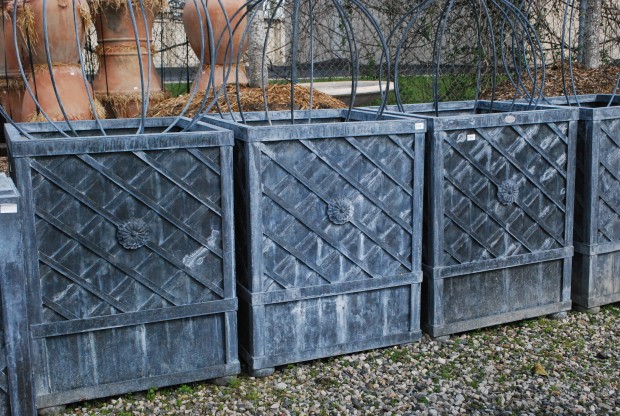

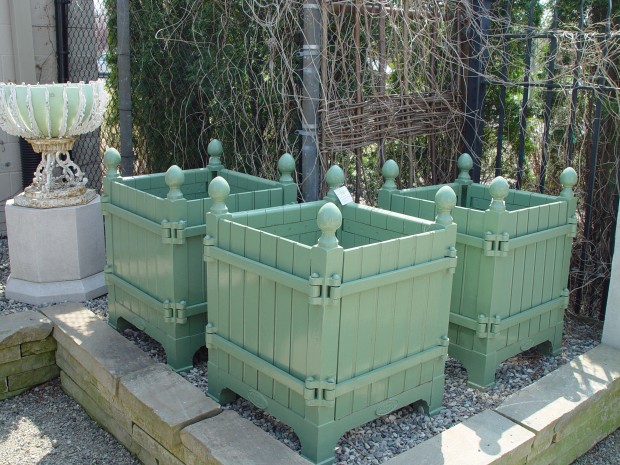
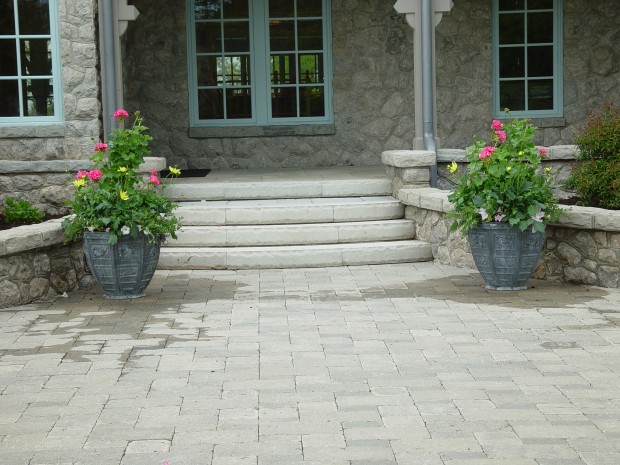
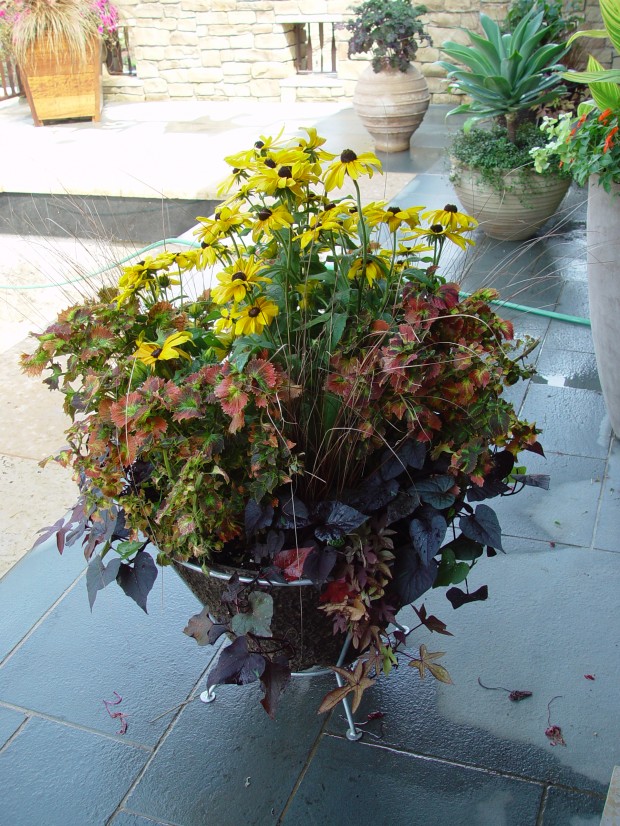
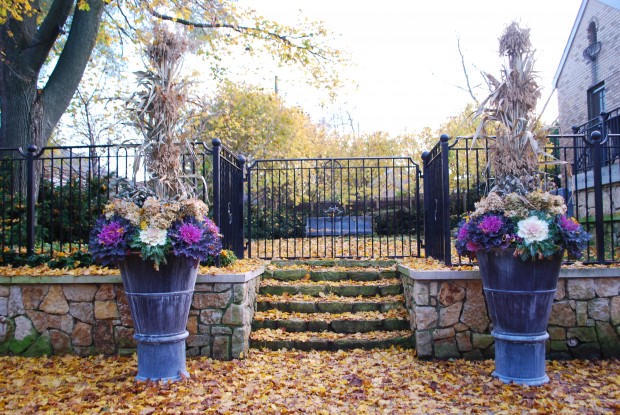
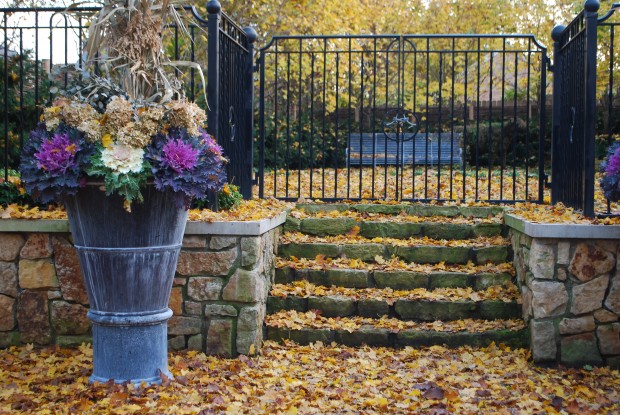
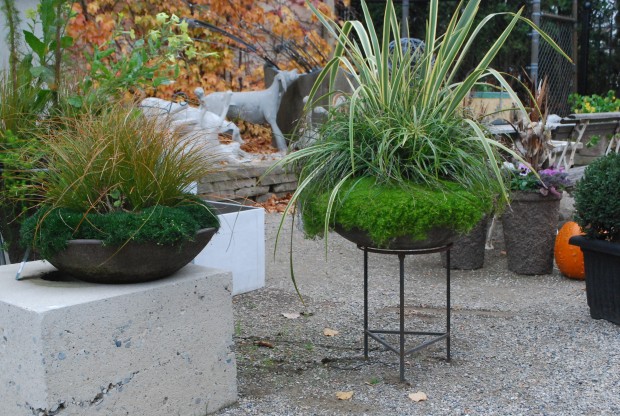
Leave a Comment